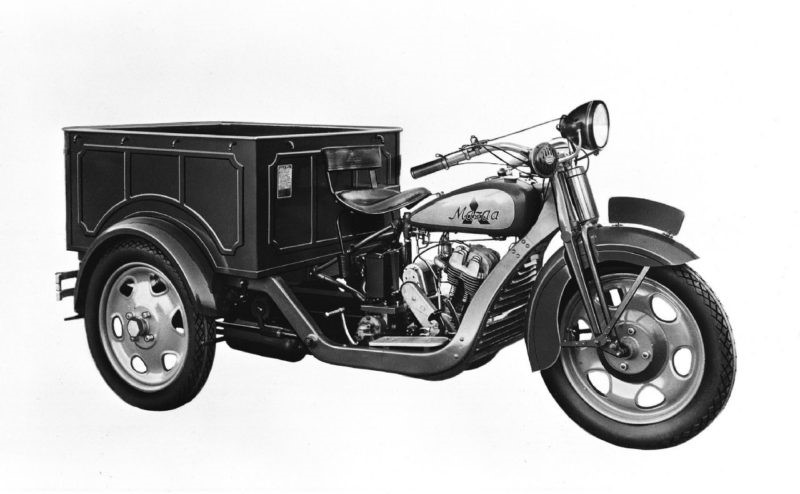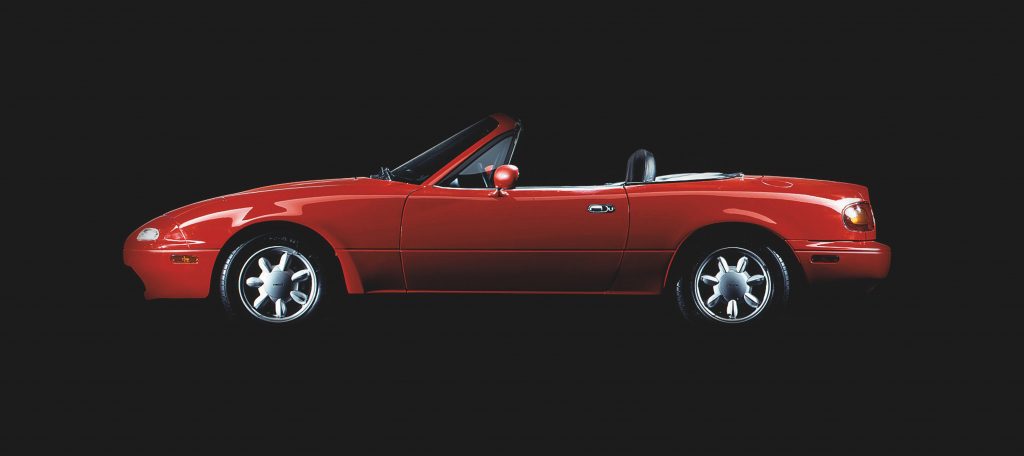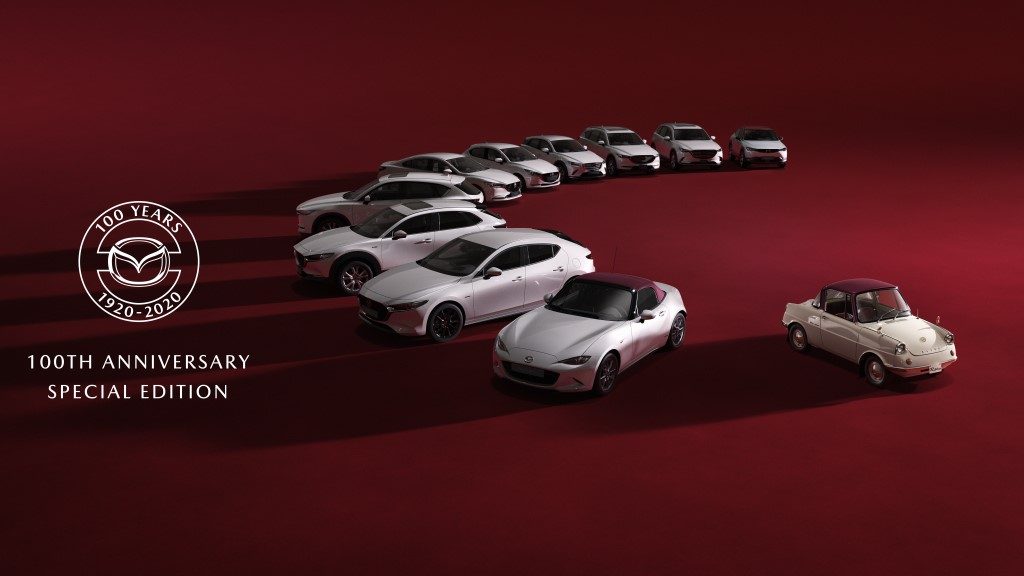Mazda began in 1920 as the Toyo Cork Kogyo Co. Ltd., founded by Jujiro Matsuda in Hiroshima, Japan. The company initially began by manufacturing artificial cork due to a shortage and high demand of natural cork. Within a few years, the production of natural cork returned to levels that closer met demand, and the company began manufacturing machine tools. In 1930 it then developed an affordable three-wheeled rickshaw truck.
The truck was called the Mazda-Go. Founder Jujiro Matsuda is said to have picked the name based on the ancient Persian god of light, Ahura Mazda. Matsuda thought naming the Mazda-Go after the god of light would brighten the image of these compact vehicles. The name, however, is also inspired by Matsuda himself, whose name is pronounced “Mazda” in Japanese.

(Image Source: Mazda-Go)
In 1940 the company introduced its first Mazda passenger car prototype, but production was halted with the start of World War II, and Mazda switched to the production of guns for the war. After the bombing of Hiroshima, Mazda completely closed until after the war and its remaining buildings were used as hospitals. From that point Mazda paid homage to the people of Hiroshima with its philosophy: Mazda does things its own way, never gives up, and strives for the exceptional. After the war, Mazda used its remaining facilities to begin making a variety of small, four-wheel trucks.
In the 1960s, Mazda began putting efforts into the development of an efficient, low maintenance and lightweight engine — the Wankel rotary engine. In 1967, Mazda unveiled the first rotary-powered vehicle, eventually offering rotary engines in nearly every vehicle in its lineup. The rotary models quickly became popular for their combination of light weight and power, especially compared to other products that required heavy V6 or V8 engines to deliver the same performance.
Mazda entered the American market in 1970, with the first rotary-powered car in the United States — the Mazda R100 coupe. However, the Wankel engines were not as fuel-efficient as small-displacement 4-cylinder engines, and the oil crisis in the United States in the mid-70s caused a dramatic downturn in sales.
Refocus On Design
Mazda refocused its efforts on high levels of design and creating vehicles for the driving enthusiast. In 1978, Mazda found its new spirit with the introduction of the Mazda RX-7, a lightweight sports car with incredible performance. The popularity of the Mazda RX-7 lead to the development of the Mazda RX-8. Mazda continued its dedication to the rotary engine and uniquely designed performance vehicles. These vehicles also helped inspire the development of the Mazda MX-5 Miata, which incorporated the concept of ‘Jinba Ittai’.
Mazda used the 900-year Japanese tradition of Jinba Ittai to begin the development of true drivers’ cars. Jinba Ittai means “one horse, one rider,” describing when the horse and rider are acting as one. Mazda focused on creating vehicles that become one with the driver, where the vehicle is an extension of the driver’s thoughts — instantly responsive, almost anticipating the next move.
In 1984, Toyo Kogyo Co. Ltd. officially became the Mazda Motor Corporation, and the Mazda logo featured all lower-case letters, except for a capital D to show its focus on Design. The current logo was introduced in 1997 and has been further refined over time. The Mazda “M” is inspired by wings that stretch out for an agile flight to the future.
In 2009, Mazda celebrated the 20th anniversary of the Mazda MX-5 Miata, whose sales by then had topped nearly 900,000 and had won almost 180 major automotive awards. Mazda MX-5 Miata holds the Guinness World Record for the best-selling two-seat sports car.

(Image Source: Insider Mazda)
Establishing Partnerships
Mazda has had a long history of partnerships with other automobile manufacturers. Their partnership with Ford began in 1971 when the Mazda B-Series pickup was sold as the Ford Courier in North America. Other Mazda platforms were used for the Ford Escort and Ford Probe in later models. The Ford Probe was built at the Mazda factory in Michigan along with the Mazda 626 sedan and Mazda MX-6 coupe.
Mazda was instrumental in helping Ford design and build the Ford Explorer, which quickly became one of the best-selling vehicles in the United States. Mazda sold a two-door version as the Navajo, which was not nearly as successful.
One of the more recent partnerships is with Toyota. Signed in 2015, Mazda supplies Toyota with its fuel-efficient Skyactiv® Technology. Mazda and Toyota also work together on developing hydrogen fuel cell systems.
Always Looking To The Future
Mazda introduced its next major technology, “SKY” in 2010. Based on a lightweight combination of ultra-efficient engine, transmission, chassis, and body components, SKY is named after “the sky is the limit”, and was later renamed Skyactiv® Technology.
Skyactiv® Technology is a combination of technologies that increase fuel economy in standard vehicles to a level like a hybrid drivetrain. Through the use of lightweight materials and optimal efficiency, horsepower is increased and emission levels are reduced. These technologies include high compression ratio gasoline engines with direct injection, a two-stage turbocharger design, highly efficient automatic transmissions, lightweight body designs and electric power steering.
In January of this year, Mazda Motor Corporation turned 100 years old. In that time, Mazda has continued to do things its own way, never giving up and striving for the exceptional. From driving success by producing nearly two million vehicles powered by the Wankel rotary engine, to forging new models of power and efficiency through Skyactiv® Technology, Mazda continues to focus on design, efficiency and performance. That’s Jujiro Matsuda’s legacy — and that’s the Mazda way.

(Image Source: Inside Mazda)
If you’re ready to get inside a Mazda vehicle and experience the power and style, stop by Neil Huffman Mazda in Louisville today.





